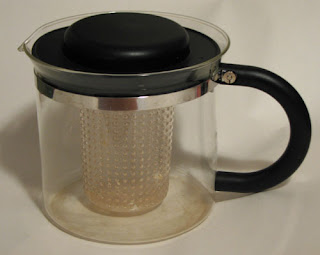"I have learned that what I have
not drawn I have never really seen, and that when I start drawing an
ordinary thing, I realize how extraordinary it is, sheer miracle. "
~Frederick Franck, The Zen of Seeing.
My poppies started blooming this week and they are incredible! I am always surprised how much poppies of this kind actually look like they are made of paper. The petals have that crinkly paper look. I like drawing the complexity of flowers. Drawing them really challenges you to put aside your mental shortcut images of flowers and look carefully at the structure. This is a line drawing, without any shading. It is good practice for me at carefully observing the shapes and lines.
Karen Miller sent me some drawings and commented, "Hard edges are easier to draw than iris petals for example, because one can much more easily see the distortions there, so self correcting works better." Probably so, but I am happy to have the "fudge factor" that drawing a flower petal gives you. You can make a few mistakes in detail and proportion and nobody ever knows!
Karen drew her morning juice container from memory, then from life. I think her memory was quite good!
Kristin LaFlamme is in the process of packing up her household for a cross country move. She said her still life was stuff left behind..
My sister-in-law, Jamie Grant, lives in Montana and is joining in with some drawings. She said she was "influenced" by the web site, Five Pencil Method. You can take drawing lessons through the web site, but they also have some free tutorials that I plan to go back and look at. Thanks, Jamie. I will add it to the inspiration page.
Jamie drew her tea kettle from memory and then again from live observation.
Jamie's shoe. Lots of great detail.
Keep drawing!





















